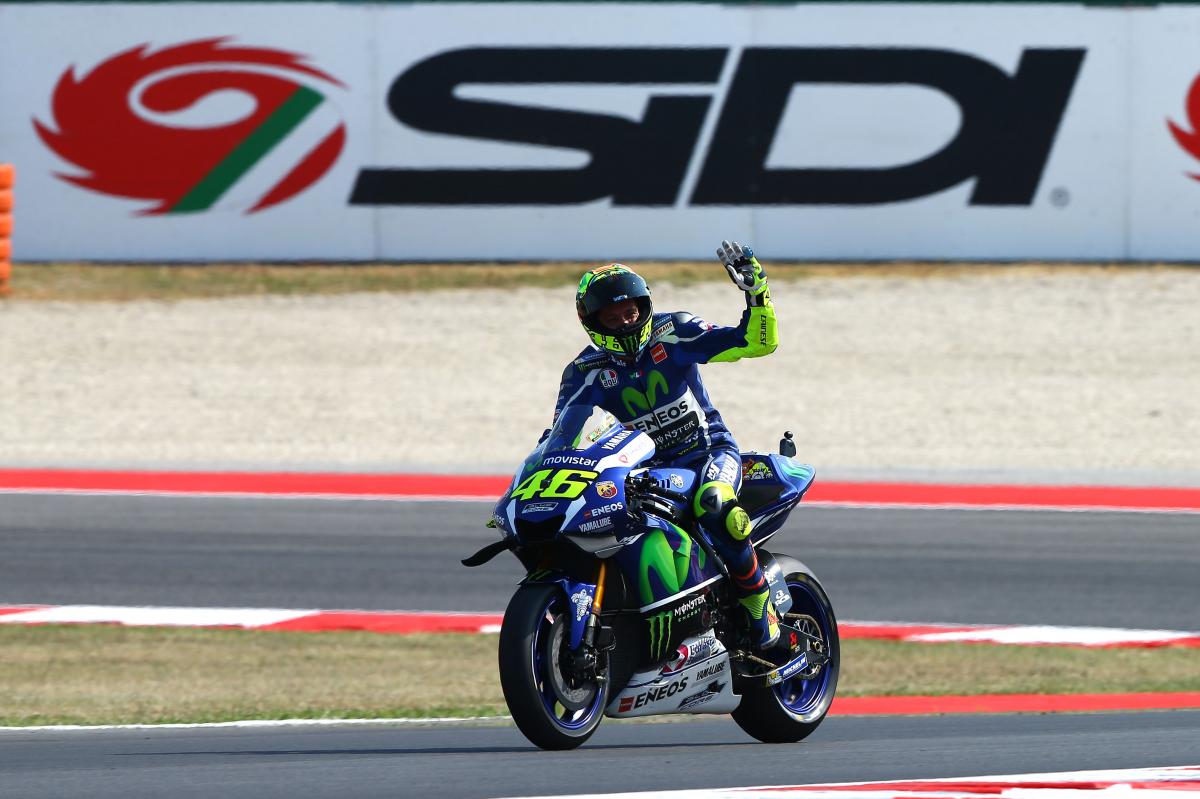San Marino: Race direction explains track limits controversy

MotoGP race director Mike Webb has explained that unless there is clear daylight between a bike and the outside of a track kerb, no penalty will be administered.
Webb's comments came in the wake of Jorge Lorenzo's pole position lap at Misano on Saturday - a new outright circuit record no less -, during which the Majorcan appeared to go beyond the track limits.
Throughout the weekend, a spate of riders in all three classes have had lap times chalked off due to using the tarmac outside the painted kerbs, leading many to question the validity of Lorenzo's final lap, which the reigning world champion called one of the best of his life.
"If any part of the motorcycle - one tyre or other, even the side of it - is touching a kerb, it is in," said Webb on Saturday evening.
"You have to have a clear gap of both tyres outside of the line. Guys are getting away with the front still just on the kerb and the back because it's sliding is off - that's in. we have to have a clear gap that I can defend to the team and say, 'that's out because I can see daylight between'.
"Sometimes it's very hard to see on the [normal] grainy images. The benefit of doubt goes to the rider. So if we can't prove exactly that he or she is out, they get away with it.
"Our guys spend all day, and it's a total nightmare. The amount of man hours we spend looking at that stuff. It's the same people every week and they are making the same judgement I haven't yet disagreed with one of their calls."
On the image of Lorenzo appearing to exceed limits, Webb commented, "There's not a clear enough gap."
Each of the top three qualifiers feel the tarmac beyond the kerbs that replaced grass or dirt is a safety improvement. "For the safety it's a big improvement," said Lorenzo. "If you go too wide from the curb and you touch the dirt it's very dangerous because you are already fast. Sometimes you cancel your lap but for the safety it's better."
While the system in place to monitor track limits is time consuming, Webb said how race direction requires hard evidence to present to teams in case they appeal the decision.
"We've got the full HD and different cameras in problem places - we know at each circuit where there is likely to be a problem and we've got guys, as in more than one person, whose only job is to look at track limits and report back.
"What we get is a marshal report, so a marshal with binoculars [says] 'this rider number'. That then get referred to the video operators who find the video reply for that exact corner at hat exact time and review it backwards and forwards, in slow-mo, whatever they need.
"It's either in or out and we need evidence before we do anything, because if it's a pole lap for example we have to be ready to justify it if a team appeals it. The criteria is - and all of the cancelled laps are - both wheels of the bike have to outside of the track and the track is defined by the colours."
Webb admitted he was not aware of Lorenzo completing his fastest lap when Aleix Espargaro had fallen toward the end of the 15-minute Q2 shootout, which may have precipitated the showing of yellow flags at some point on the track.
"I didn't know... I'll check with my stewards. I know we investigated a possible yellow incident and it was deemed not a problem. I'd have to check with my guys if that is exactly the lap you're talking about. We do the same process with yellow flags; we get a marshal report - or we see it live - and then go back and look at all the angles. I want to see the yellow flag, the green flag and the pass and then we do the evaluation.
"You are supposed to slow down and be prepared to stop and in the past we've had Marquez in Silverstone crashing - okay he made a mistake, but he was obviosity going fast enough to push to the limit and was penalise for that."
On how race direction will marshal the matter of track limits during a race, Webb continued, "The rule book says about gaining an advantage. So if we can prove an advantage as in a sector time that's obviously better than the sector times around it, or the gap to riders in front or behind, an advantage is penalised straight away. That's the rule book.
"The thing we struggle we - at Silverstone and here a number of other circuits around the world - the nature of them means you can go out of track limits without being able to prove an advantage. My ruling as race director and it's written and given to the rider is that multiple track limits without an apparent advantage will be deemed to be an advantage.
"The reminder note I sent this week to the teams is the philosophy behind that is, if you are continually going out of track limits - even with no advantage - you're actually using a different race track to the others and have to be penalised for that."

